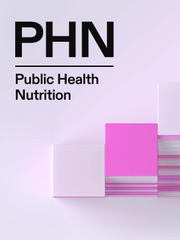No CrossRef data available.
Article contents
A novel food frequency questionnaire for Brazilian adults based on the Nova classification system: development, reproducibility and validation
Published online by Cambridge University Press: 27 March 2025
Abstract
To describe the development and validation of the Nova Food-Frequency Questionnaire (NovaFFQ) for Brazilian adults.
The NovaFFQ is a self-administered, semi-quantitative questionnaire. The food list includes the most consumed foods and drinks based on 2017-2018 National Food Intake Survey data. We identified and differentiated foods that could be classified into multiple Nova groups. We assessed reproducibility and criterion validity using the percent energy contribution of each Nova group. Reproducibility was assessed by comparing NovaFFQ estimates on two occasions. Criterion validity was assessed by comparing the first NovaFFQ estimate against the mean of two Nova24h recalls. We estimated the intraclass correlation coefficients for both analyses and assessed the agreement of classification into quintiles using the prevalence-and-bias-adjusted kappa coefficients for criterion validity analysis.
Nationwide Brazilian study, the NutriNet-Brasil cohort.
There were 243 participants in the reproducibility analysis and 377 in the criterion validity analysis.
Strong reproducibility was observed, with an intraclass correlation coefficient of 0.91 for all the Nova groups. Criterion validity showed a moderate intraclass correlation coefficient, ranging from 0.61 for processed and ultra-processed foods to 0.65 for unprocessed and minimally processed foods. Substantial agreement in ranking individuals across quintiles was found, as indicated by the prevalence-and-bias-adjusted kappa (PABAKs= 0.74, 0.72, 0.70 and 0.73 for unprocessed and minimally processed foods, culinary ingredients, and processed and ultra-processed foods, respectively).
The NovaFFQ is a valid instrument for assessing food consumption by processing level, especially for discriminating individuals according to the magnitude of consumption in all Nova groups.
- Type
- Research Paper
- Information
- Creative Commons
- This is an Open Access article, distributed under the terms of the Creative Commons Attribution licence (http://creativecommons.org/licenses/by/4.0/), which permits unrestricted re-use, distribution and reproduction, provided the original article is properly cited.
- Copyright
- © The Author(s), 2025. Published by Cambridge University Press on behalf of The Nutrition Society


